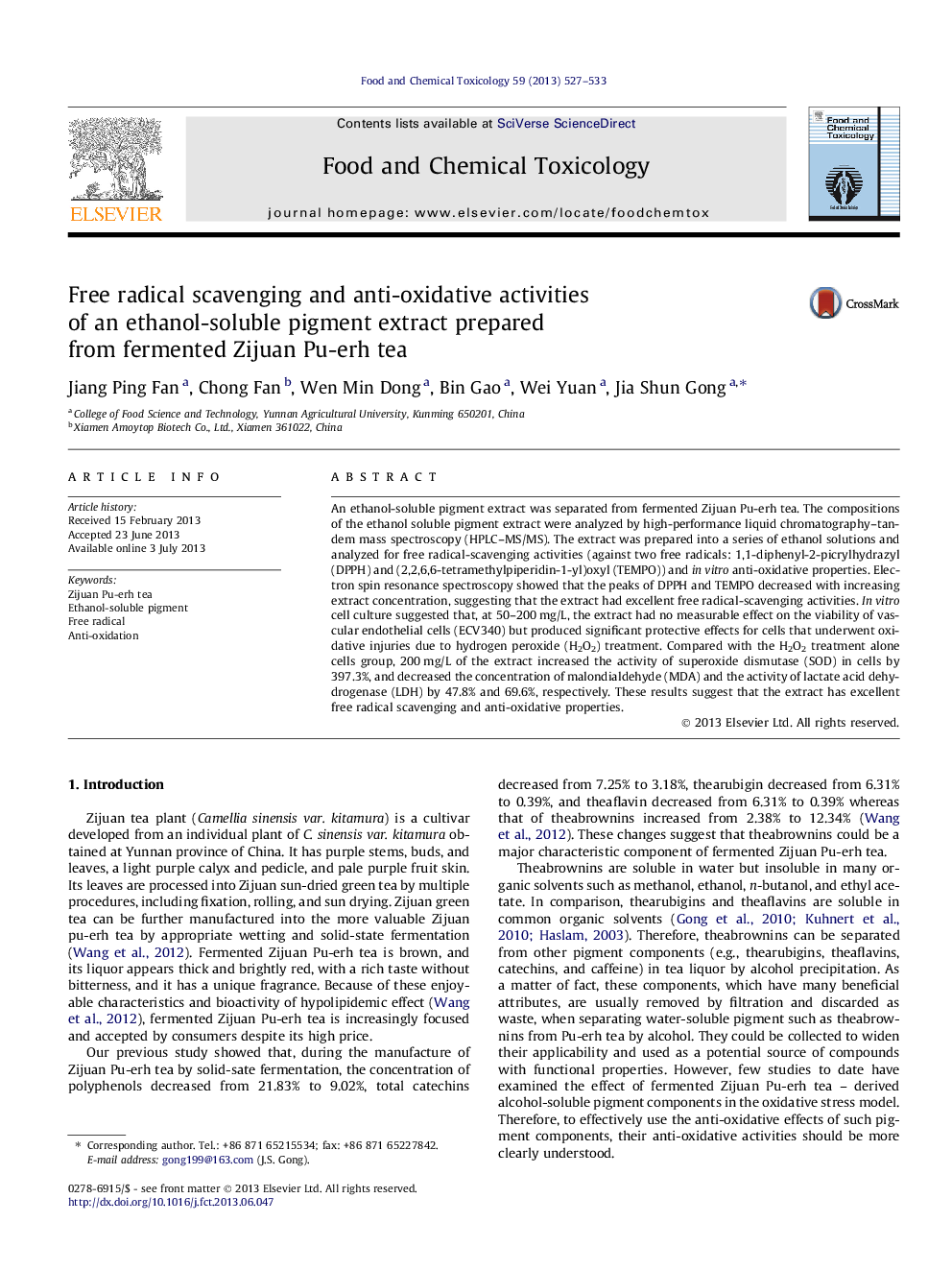| Article ID | Journal | Published Year | Pages | File Type |
|---|---|---|---|---|
| 5851095 | Food and Chemical Toxicology | 2013 | 7 Pages |
â¢Alcohol-soluble components from fermented Zijuan Pu-erh tea liquor were extracted.â¢The compositions of an ethanol soluble pigment extract were analyzed by HPLC-MS/MS.â¢50-200 mg/L pigment extract solution protected ECV340 cells from oxidative injury.â¢With increasing extract concentration, the ESR peak of DPPH decreased substantially.
An ethanol-soluble pigment extract was separated from fermented Zijuan Pu-erh tea. The compositions of the ethanol soluble pigment extract were analyzed by high-performance liquid chromatography-tandem mass spectroscopy (HPLC-MS/MS). The extract was prepared into a series of ethanol solutions and analyzed for free radical-scavenging activities (against two free radicals: 1,1-diphenyl-2-picrylhydrazyl (DPPH) and (2,2,6,6-tetramethylpiperidin-1-yl)oxyl (TEMPO)) and in vitro anti-oxidative properties. Electron spin resonance spectroscopy showed that the peaks of DPPH and TEMPO decreased with increasing extract concentration, suggesting that the extract had excellent free radical-scavenging activities. In vitro cell culture suggested that, at 50-200Â mg/L, the extract had no measurable effect on the viability of vascular endothelial cells (ECV340) but produced significant protective effects for cells that underwent oxidative injuries due to hydrogen peroxide (H2O2) treatment. Compared with the H2O2 treatment alone cells group, 200Â mg/L of the extract increased the activity of superoxide dismutase (SOD) in cells by 397.3%, and decreased the concentration of malondialdehyde (MDA) and the activity of lactate acid dehydrogenase (LDH) by 47.8% and 69.6%, respectively. These results suggest that the extract has excellent free radical scavenging and anti-oxidative properties.
Graphical abstractDownload full-size image
